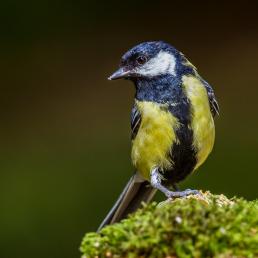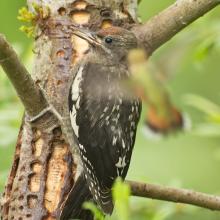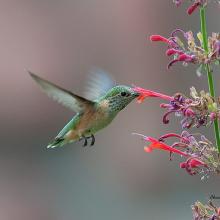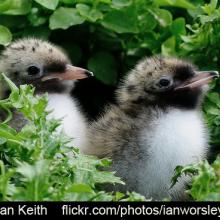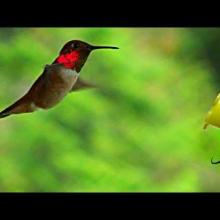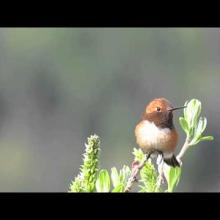

Join BirdNote tomorrow, November 30th!
Illustrator David Sibley and actor H. Jon Benjamin will face off in the bird illustration battle of the century during BirdNote's Year-end Celebration and Auction!
In September, this Arctic Tern flies from Alaska all the way to Antarctica. Rufous Hummingbirds follow pathways of mountain wildflowers, from as far north as Alaska south to Mexico. Ruby-crowned Kinglets, migrate altitudinally from the mountains to the lowlands. Each of these birds migrates, but on a very different course. All make the most of food and breeding opportunities that change with the seasons.
Bird sounds for BirdNote come from The Macaulay Library at the Cornell Lab of Ornithology.
BirdNote®
Migration - Long, Short, and In-between
Written by Bob Sundstrom
This is BirdNote!
In September, Arctic Terns fly south over the ocean, from Alaska all the way to Antarctica. [Arctic Terns’ gruff calls]
Also in September, the last Rufous Hummingbirds depart their breeding range in the West, following “floral highways” of mountain wildflowers south to Mexico. [Male Rufous Hummingbird wing-whistle]
Ruby-crowned Kinglets are leaving the northern evergreen forests where they nest, on their way to milder climates. [Ruby-crowned Kinglet song]
Each of these birds is migrating, but on a very different course. All have the same adaptive goal — making the most of food and breeding opportunities that change with the seasons.
Arctic Terns follow one of the longest annual migrations, traveling as much as 44,000 miles each year. Arctic tundra provides their ideal nesting site in summer, the Antarctic, the ideal feeding grounds in our winter. [Arctic Terns’ gruff calls]
Rufous Hummingbirds are medium-range migrants, traversing about 5,000 miles a year between temperate and tropical nectar sources. [Male Rufous Hummingbird wing-whistle]
Some Ruby-crowned Kinglets are altitudinal migrants, especially in the West. They may remain close to the same latitude all year, but spend the cold months in the relative warmth of the lowlands dining on insects and their eggs. In summer, you’ll need to ascend thousands of feet into the western mountain ranges to hear the kinglet’s exuberant song. [Ruby-crowned Kinglet song]
For BirdNote, I’m Mary McCann.
###
Bird audio provided by The Macaulay Library at the Cornell Lab of Ornithology, Ithaca, New York. Arctic Tern calls, Ruby-crowned Kinglet song and Rufous Hummingbird call recorded by G.A. Keller.
Ambient songbird track recorded by C Peterson.
BirdNote’s theme music was composed and played by Nancy Rumbel and John Kessler.
Producer: John Kessler
Executive Producer: Chris Peterson
© 2013 Tune In to Nature.org September 2013 / 2017 / 2020 / 2024 Narrator: Mary McCann
ID# migration-07b-2020-9-12 migration-07b
Arctic Tern statistics from: Berthold, Peter. Bird Migration: A General Survey. New York: Oxford University Press, 1993.
